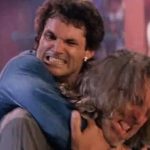Skeleton Key 2 (2025) – Review

Related movies:
The door groans open once again, and with it comes a chilling echo of the past. Skeleton Key 2 is not merely a sequel; it is an invocation of memory, folklore, and dread that has been fermenting for twenty years. Where most horror follow-ups chase nostalgia with loud scares, this one lingers like a whispered curse in the night air of Louisiana.
From its opening frames, Oz Perkins signals that this story will not be a simple retread. Known for his uncanny ability to turn silence into terror (I Am the Pretty Thing That Lives in the House), Perkins transforms the Southern Gothic landscape into a living, breathing entity. The bayou is not a backdrop—it is a character with secrets buried in the mud, eyes staring from the moss, and voices that hiss through the cicadas.
Kate Hudson’s return is not fan service—it is essential. Time has weathered her character, giving her a haunted resilience. She carries the weight of what she once survived, while Jenna Ortega, luminous and sharp, embodies the younger generation’s reckless curiosity. Their dynamic bridges two eras of horror: the gothic tradition of the past and the restless, anxious spirit of the present.
The film excels in atmosphere rather than spectacle. Shadows stretch unnaturally long, old mansions seem to sigh under their own history, and every mirror becomes a threshold. Perkins builds unease with patience, letting dread seep into the audience’s bones rather than throwing it in their faces. This restraint makes the eventual shocks feel earned, like the snap of a trap you never saw being set.
What makes Skeleton Key 2 particularly resonant is its relationship with folklore. Hoodoo, whispers of spells, and ancestral warnings are not presented as gimmicks—they are woven into the fabric of the story. The film treats belief with respect, showing how traditions outlast generations, shaping destinies whether one accepts them or not. The question isn’t whether magic is real; it’s whether you’ll survive long enough to stop doubting.
Jenna Ortega shines in this space. Her performance balances fear with defiance, embodying the modern skeptic who slowly realizes that reason alone cannot withstand the weight of curses passed down through bloodlines. As her character’s skepticism dissolves into trembling belief, the audience finds itself drawn deeper into the same trap.
Cinematographer Julie Kirkwood captures Louisiana as both a dreamscape and a nightmare. Golden sunlight filters through decayed shutters, only to be devoured by the swamp’s suffocating darkness. The result is a visual duality: beauty on the surface, rot underneath. It mirrors the film’s central theme—that every charm, every whispered prayer, hides a bargain.
The score, low and mournful, thrums like the heartbeat of the bayou itself. Sparse piano notes echo like distant church bells, while unsettling strings coil around the silence, tightening it until you feel your chest constrict. It is not music that leads you—it stalks you, creeping closer until you realize it’s already inside.
Perkins is not interested in happy endings. Skeleton Key 2 is less about triumph than about surrender: to heritage, to fate, to the inescapable pull of what has already been written. In this way, it resonates not only as horror but as tragedy. The characters do not simply fight ghosts—they confront the idea that history never dies, it only waits.
By the time the final act unfurls, you may find yourself gripping the armrest, not because of jump scares, but because of inevitability. The dread is not in what could happen, but in the chilling certainty of what must. And when the last door creaks shut, the silence that follows feels heavier than any scream.
Skeleton Key 2 is a rare sequel: haunting, poetic, and unafraid to deepen rather than dilute its mythos. It is horror not as cheap thrill, but as ritual—a reminder that some doors, once opened, were never meant to close again.











